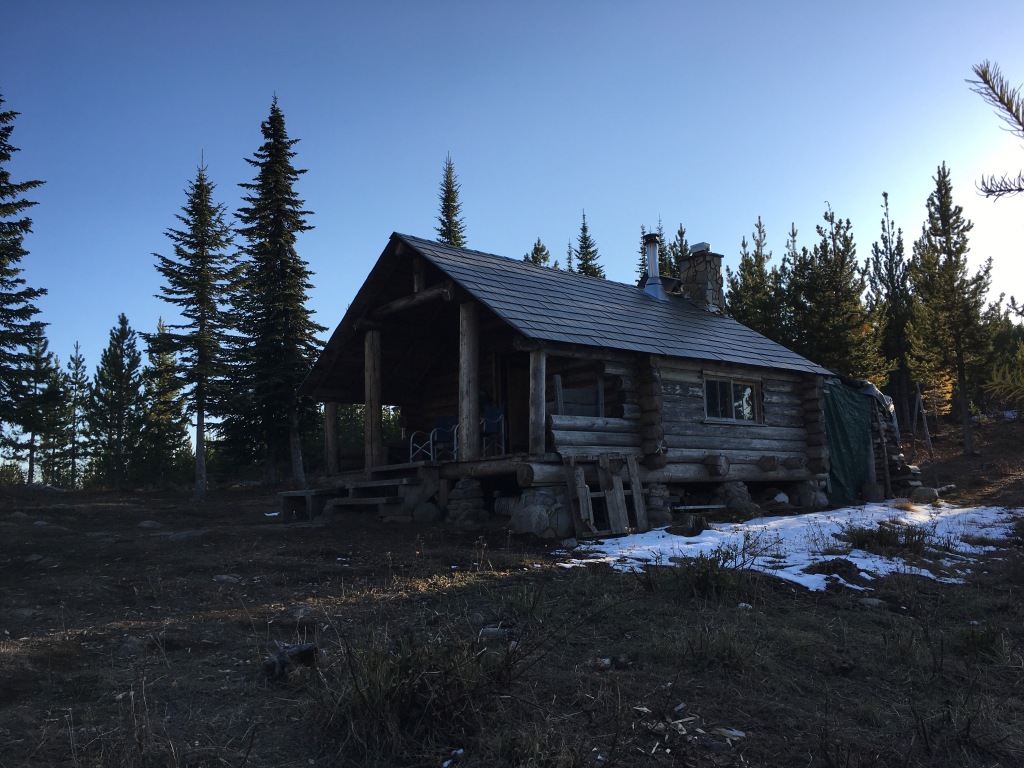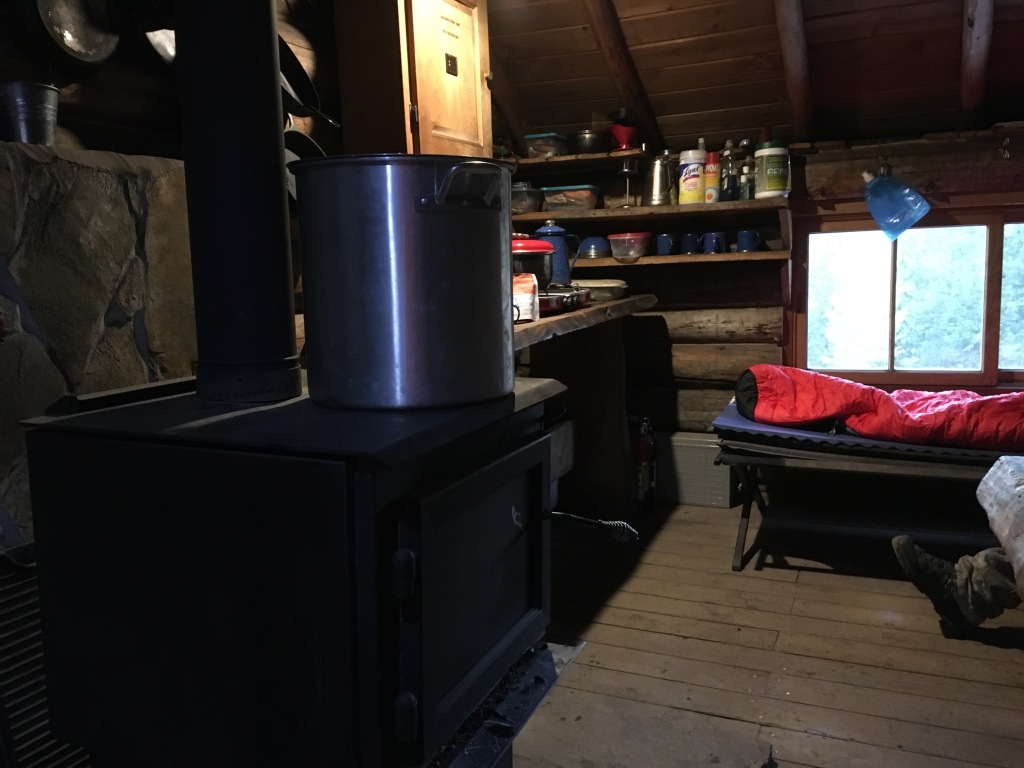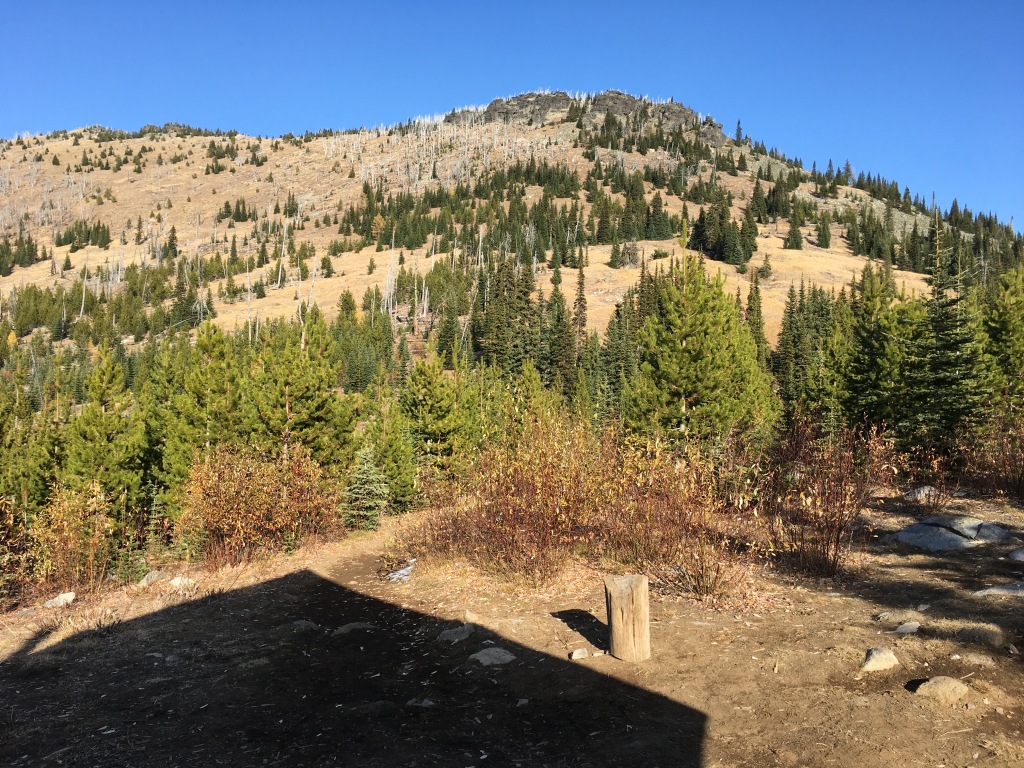Snow Peak Cabin on the Kettle Crest Trail, Part of the Pacific Northwest Nations Scenic Trail



Snow Peak Cabin on the Kettle Crest Trail, Part of the Pacific Northwest Nations Scenic Trail



Filed under Oware Backpacking Gear
Backpacking where frozen ground makes pounding in tent stakes tough, a small hammer or hatchet is useful. If one is in an area of excess wood, campfires, wood tent stakes and poles might be part of the trip. Then a hatchet can be good to have.
Marble makes a small hatchet which weighs 13 ounces and I found for $17 plus shipping. Small enough it fits in my back pocket. It does a good job at pounding stakes, and is useful for light wood gathering. I like it for tapping away fire starting pitch chunks from the “cat face” of a pine tree, quickly limbing off the small dead pencil size “magic sticks” at the base of trees, making shavings and getting at dry wood in a dead stump. It is smaller than the usual hatchets, so won’t be up to larger tasks like felling anything more than a sapling. You won’t be splitting rounds with this, but for wood gettin’ I find it better than a pocket knife and sometimes better than a saw. I made a small leather sheath that leaves one side open for driving stakes and weighs 1/2 ounce. It came sharp enough for most tasks but if you like to whittle, it needs a bit of work with a stone to be shaving sharp. The wood appears to have a light varnish, but if you like could be sanded and tung oiled.
Pictures follow
Items needed:
First attach the Ridgeline tie out to a tree or pole at a height that allows the netting to sit 4″ on the ground.
I like to use a releasable tautline hitch.
If using a pole for the ridgeline, tie a clove hitch around the top of the pole and then run the line down to a stake on the ground. Adjustable trekking poles make height adjustments easier.
Have someone hold the pole upright and go attach the other ridge line to a pole or tree.
Stake out the four corners at a height that maintains about 4″ of netting laying on the ground.
Adjust cord length using the tautline hitches and by moving stakes so that the tarp is stretched snug with minimum wrinkles. In a wind, you want the tarp to hum, not flap.
If needed, tie out center side points and four corner points on netting. Shepherds crook type stakes work well for the netting. The netting should be snug but not tight along the sides of the tarp (gentle on the netting) and loose on the pleated ends so one can crawl under the netting easily without having to remove a stake.

 Zipper opens on top and down one side so heavy item can be slid into the side then zipped up.
Zipper opens on top and down one side so heavy item can be slid into the side then zipped up.
Side shoulder strap.
Filed under Do It Yourself, Oware Backpacking Gear
A simple coiling method to keep cord untangled until you need them. I learned this at Outward Bound. Firm Cord works best. I like to use 2mm cord on the most used tie outs and carry a bit of 1mm cord for long reaches to distant anchors.

Starting at the bitter end, coil around hand leaving a foot or two between the hand and tarp attachment point.
“Amazing quality, Dave! This was my first ever pitch of a pyramid tarp and it took me only a couple of minutes. Looking forward to using this for multi day backcountry skiing, backpacking, river running, mountain biking, etc. Thank you, Scott”
On many Outward Bound courses, toilet paper was left at home and local natural items substituted to cut down on backcountry environmental impact. In some desert environs, where the most popular substitutes of snow or vegetation weren’t available, toilet paper was carried and then burned or carried out. It should be obvious (but unfortunately not to all) that burning toilet paper is a great hazard in forest fire conditions, so carrying it out was then prefered.
In some damper times and places, burning works well. Here is what I like to bring (in addition to using snow and other substitutes). Weighs 23 grams and is enough for 2 weeks.
Tiny cuben fiber stuffsack lined with thin plastic for water tightness.
14 half sheets of paper towel (more durable than tp and burns readily)
7 feet of jute cord
I cut a 6″ section of the jute cord and fuzz it up and use it to catch a spark from a mish metal flint which then catches the paper towel and with care will burn the whole thing to ash.
